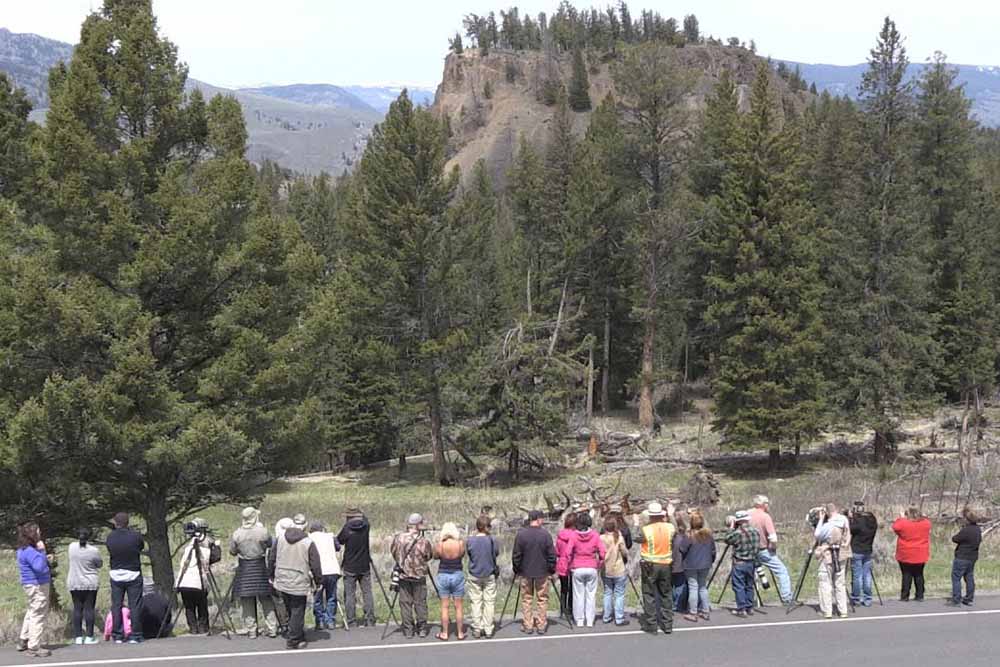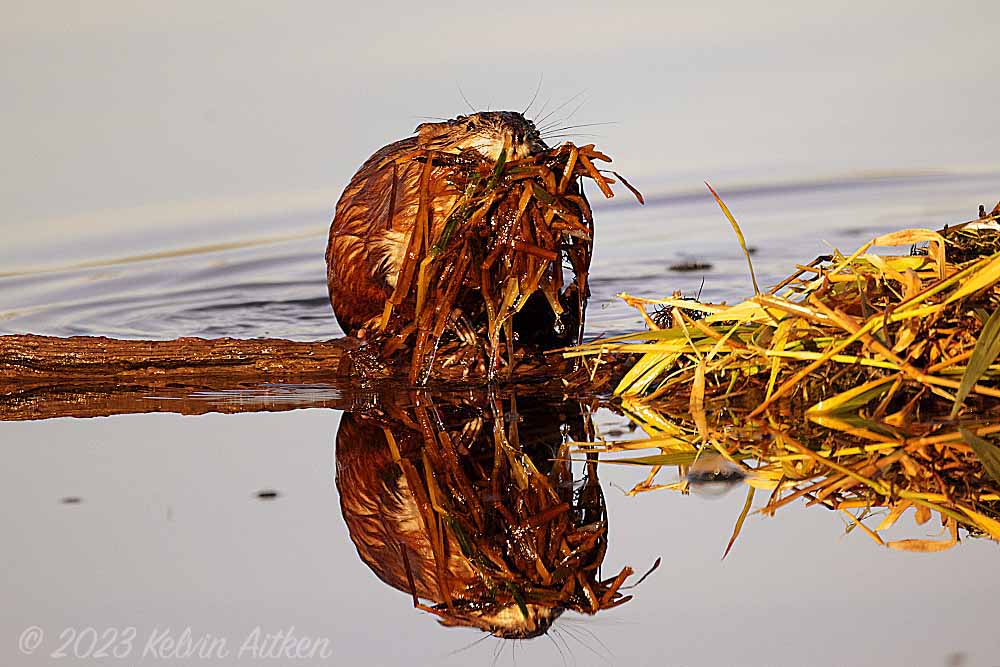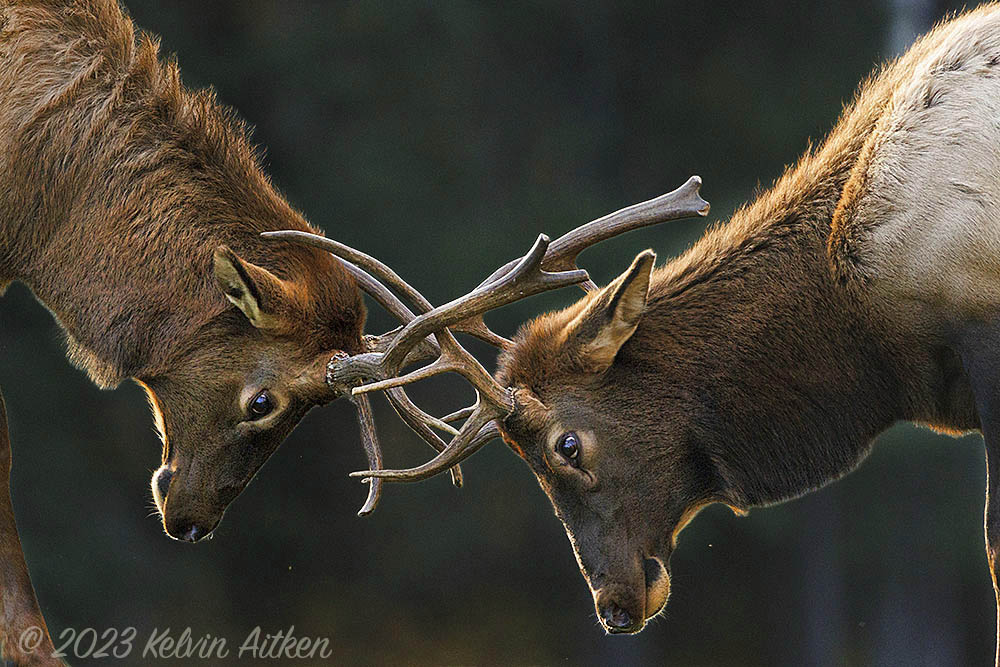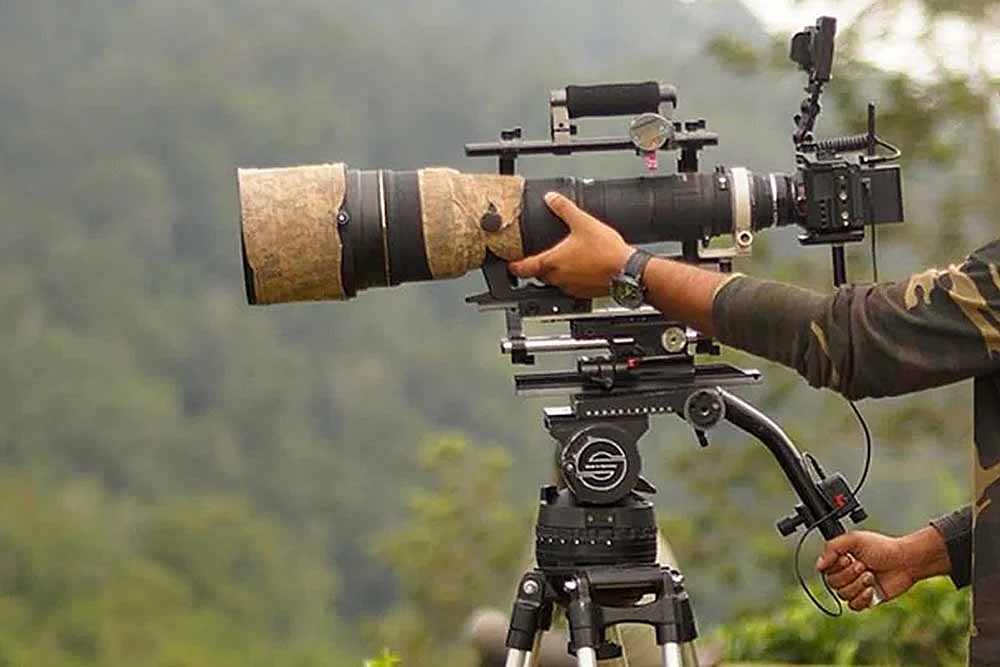Tripods
Redundant Excess BaggageWhen it comes to wildlife photography, and indeed many other fields of photographic endeavour, a good sturdy tripod has its place.
If you've been watching YouTube videos on wildlife photography that have been made over the last few years, you'll see an intense push is to have you buy, and use, a heavy tripod, usually with a gimbal head. It's the "go-to" standard, apparently.
You can find a plethora of videos touting this or that brand of tripod, and even more on various tripod heads: gimbals, ball heads, video fluid heads, mutant gimbal-ball-fluid heads, etc.
So when something is so popular, promoted, expected and pushed, the first thing we should do is question the status quo.

Old school basics
So let's do that. Let's look at tripods and their array of head designs and find out if:
A: What sort of tripod is useful to a wildlife photographer?
B: What sort of head should a wildlife photographer use?
And, most important of all,
C: Should I even use a tripod?
First off, let's start our answer with the internationally accepted prefix of, "It depends....".
Should I use a tripod? Well, it depends on what you're doing. That's a good place to start.
What's a tripod for? The basic use is to support your camera, with lens attached, along with other possible accessories. The support is primarily intended to provide stability to allow the camera to take a shot without camera movement. It can also be used to provide precise framing and composition, without the slight movement that's inherent with hand held cameras.
Hmmmm. OK. Sure, we can understand that......... if it were still 1990.
Back in the bad old days, the majority of wildlife images (you know, the good ones that appeared in print in those things that were called "magazines") were shot on low ISO film. And when I say "low", I mean 100 ISO or less. At the end of the film era there were two film products that made up most of the wildlife photo industry output: Kodachrome 64 and Fuji Velvia 50 (which was more like ISO 40, but I digress). Yes, there were other products but those were the two that serious photographers used.
So, add to that a long lens and you were pretty much stuck with slow shutter speeds, especially when shooting in the early and late hours of the day to avoid the dreaded harsh midday sun.
Anyone trying 200 ISO film got a rude shock at the rough grain, low colour saturation and general nastiness of the experience. If you really needed 200 ISO, you got a much better result by just push processing ISO 100 film 1 stop to get 200 ISO (meaning that you left the film in the first developer for a longer period of time to "push" the underexposed silver crystals to increase their density to a more normal level).
At least you expected nasty harsh grain at 400 ISO, and often that was why it was used, to add an effect or texture to the finished product. Or as a last ditch act of desperation to get a useable shutter speed with the higher ISO in dull/dark conditions.
Then there were the dizzying heights of 1000-1600 ISO film, sometimes push processed as well, used in fast breaking sports in poor light (e.g. indoors) such as basketball or night football.
Therefore, you can see why a tripod was considered a basic part of a wildlife photographer's kit and, by extension, that 100 was considered the practical upper level for ISO.
Fast forward to today and, hooley dooley, we have cameras that have a default ISO of 400, performing beautifully at 1000 ISO, manage noise nicely way beyond 4000 ISO plus cameras with 5 stops or more of image stabilisation. I can get useable handheld images with my 800mm at 1/30 sec.
It has taken a while, particularly for older photographers, to accept and embrace the new technology, the same technology that pretty much eliminates the need for a tripod.

Default behaviour - Think different
Added to all that, consider the massive weight loss of modern lenses in the 300mm to 1200mm range. For example, the old Canon EF 600mm f4 weighed in at 5.36kg. The new RF 600mm f4 is 3.09kg which is 2.27kg lighter. The modern Nikon AF-S 600mm f4 weighs 3.81kg and the new 800mm f6.3 a mere 2.38kg.
That's not even considering the Canon 800mm STM weighing in at a featherweight 1.26kg. An 800mm that can be wielded in one hand? Yikes.
So at this stage, considering modern camera equipment, let's reset the default answer from "you MUST use a tripod" to "you DON'T need a tripod" then look at the situations where "you MIGHT need a tripod".
A "must have" situation is where you need very long exposures. That would probably not be for wildlife though, more like astro or landscape work. So let's ignore that.
A more common situation is where you are in a hide or in a similar static situation, particularly where the subject is going to appear in a given position, such as when you might be photographing a fox emerging from its den or you are prefocused on a branch, hoping a bird will land there (a technique used in baited situations or near water holes).

When your critter can only be in one possible spot
Sitting there with your camera up to your eye for even a minute will quickly tire you and give you the dreaded wobbles. Having the camera on a tripod will enable you to quickly recompose, if necessary, and get your shot, without the time lag inherent in lifting a camera up to your eye.
Another situation is where you're shooting video. Even with stabilisation, no lens/camera combo will give you a truly steady video clip, even if you throw in slow motion. A tripod is pretty much a given if you want professional looking video results.
Yes, you can get away with a wobbly clip if you're catching a scene that's super rare where event a moment's delay will have you miss the shot, like a wolverine attacking an otter, but otherwise your wobbly video will be restricted to "scroll on by" social media.
The big advantage of NOT using a tripod is that you are able to move very quickly, from standing to ground level, left a meter, right 5m, higher, lower, eye level, knee level. All so quick without wrestling with an unwieldy three legged monster.
If hiking, it's also much easier, and lighter, to carry just the camera and lens, with very quick response to the sudden appearance of a critter compared to the same camera rig on a tripod, which will most probably be set to the wrong height.
Considering that the background and "edge of frame" detail can make or break an image, having the ability to very quickly move and make positional adjustments is a major reason why you SHOULDN'T use a tripod.
I do have a tripod and I do carry it with me most of the time but I rarely use it. It only weighs 1.4kg, folding up into a tiny package that's only 54cm long (both figures including a ball head). It's design allows me to spread the legs right out so that the camera is just a few cm from the ground. It's a far cry from the heavy back breakers with clunky gimbal head that you normally see.
Since I'm usually shooting critters that are shorter than me, sometimes much shorter, I never need a tripod that extends more than waist height (usually less) as I'm shooting from a prone or seated position, whether that be in the open or in a hide.
For that reason, I prefer to use a light, compact travel tripod. The savings in bulk and weight are considerable.
Some may say that a travel tripod isn't heavy enough to support large lenses but, as mentioned before, most of the time I'm lying on the ground or crouching or sitting so the tripod is never much higher than 30%-50% of it's maximum height. That means it's much sturdier than the numbers suggest, able to support my heaviest setup with ease.
Yes, if you are using an old lens with all that extra weight, and a camera body that has no built in image stabilisation, I can understand if you do use a tripod on most shoots, and a heavy one at that. But as you transition to mirrorless bodies and lighter telephotos, you really should leave that old finger pinching, back breaking, time wasting monstrosity behind.

You're not going to get this angle with a tripod at full extension
A question for wildlife photographers: how is a tripod really used in our field of endevour?
A landscape photographer uses long exposure times, often half a second or much more. So they need a tripod that keeps the image, and camera, rock steady.
A videographer produces a product that magnifies every single movement by the camera, so a sturdy tripod and high quality fluid head (for smooth panning) is essential.
But we wildlife photographers are usually shooting with much higher shutter speeds, 1/500 and up to 1/8000 or more. For a wildlife photographer in low light conditions we may drop down to 1/125 or even 1/30, but often we crank up the ISO to use 1/250 or more to account for subject movement (which is a whole differant ball game, compared to in-camera image stabilisation which only deals with camera/lens movement).
We're also, usually (if you are doing it right) waiting for long periods of time for a critter to emerge or wake up or change from static to active behaviour.
So what we need is a tripod that just supports the camera at or near our current eye level, allowing us to quickly react to a critter suddenly becoming "photographable".
For us, it doesn't matter if the camera isn't rock steady. It doesn't need to be the rock of Gibralter. It just needs to be able to be keep the camera at about the correct hieght for our eye while allowing us to quickly make slight composition adjustments without having to have a back and arms like The Incredible Hulk.
Therefore, for wildlife stills, we don't need a bulky, heavy tripod. A small, packable, light weight travel (or similar) tripod will do the job, even at full extension. Or even just a monopod. Or a small tripod without the legs spread, imitating a monopod.

Hanging off the side of a breakwater near waterlevel: when a tripod just won't work
If you have ever shot with a group, such as on a tour or part of a social outing, you're probably familiar with the sight of tripods lined up with cameras attached, all at eye level and dug firmly into the ground.
Ditching your tripod will instantly free you up to drop flat to the ground or climb on a car or up a tree or move slightly to shift twigs out of the way or adjust the background or walk 10m away to line up a background that will make your shot look completely different and, most probably, better.
In contrast to that, a tripod acts like an anchor to your creativity, holding you down to one spot. The thought of moving your tripod and resetting it's level and height holds you back from making even minor changes in position.
If you consider that, in practical terms, you only need the camera to your eye for a few seconds, your payoff for using your long lens hand held will be the ability to have unlimited flexibility with your position without being physically taxed by the weight of your tripod, along with all that time wasting fumbling to make adjustments or move position.
What sort of tripod should you get? Carbon fibre is lighter than aluminium but more expensive and, especially in extreme cold, prone to shattering if dropped onto a rock or stood on by an elephant. I personally have both types but prefer the carbon fibre for the lighter weight.
If your basic setup style is to have a tripod with a heavy lens at eye level or you shoot lots of video, then yes, go for a 30mm diameter leg, or greater, along with a heavy gimbal. But if you want to be able to move quickly, to get low, to adapt to your subjects movements, ditch the tripod as a default setup and transition to a much lighter model for backup or for use in truly static situations.

When the action starts, being anchored to one spot is going to hold you back
Tripod heads
Associated with the old dinosaur camera outfits with heavy tripods, gimbal heads have been the recommended norm. They were, with the old heavy setups, a real advantage. But, again, with modern equipment, those heavy, bulky gimbals are no longer necessary.
If you have one, by all means keep using it if you wish. But if you're buying a new tripod head, have a look at the much smaller and lighter alternatives including ball heads with directional locks and counterbalancing.
The main features you should look for are the ability to use Arca Swiss style plates (fast, simple, secure), secure locking and smooth movements.
Those of you who make videos on a regular basis, a fluid head is a must. Gimbals and ball heads just don't do the job. Fluid heads are bulky and painfully heavy, but they do the job, panning smoothly like no other head can.

Video? You need serious legs with a fluid head (© Sripad Sridhar)
